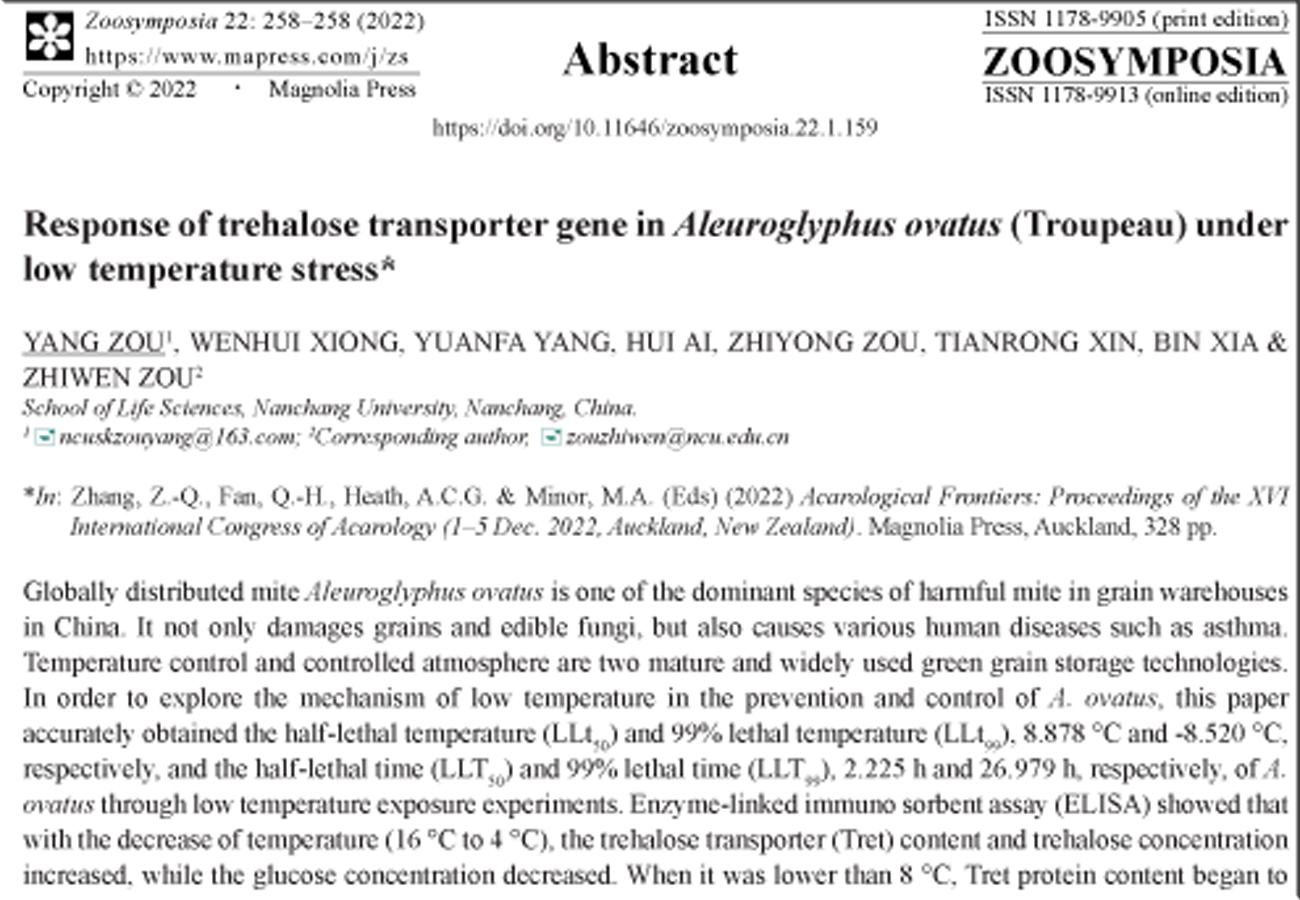Abstract
Globally distributed mite Aleuroglyphus ovatus is one of the dominant species of harmful mite in grain warehouses in China. It not only damages grains and edible fungi, but also causes various human diseases such as asthma. Temperature control and controlled atmosphere are two mature and widely used green grain storage technologies. In order to explore the mechanism of low temperature in the prevention and control of A. ovatus, this paper accurately obtained the half-lethal temperature (LLt50) and 99% lethal temperature (LLt99), 8.878 °C and -8.520 °C, respectively, and the half-lethal time (LLT50) and 99% lethal time (LLT99), 2.225 h and 26.979 h, respectively, of A. ovatus through low temperature exposure experiments. Enzyme-linked immuno sorbent assay (ELISA) showed that with the decrease of temperature (16 °C to 4 °C), the trehalose transporter (Tret) content and trehalose concentration increased, while the glucose concentration decreased. When it was lower than 8 °C, Tret protein content began to decrease, trehalose content decreased, and glucose content increased after 4 °C. In the meantime, the content of trehalose transporter in egg stage was significantly higher than that in other stages (P <0.05). Then, the full-length of AoTret1-1 and AoTret1-2 genes of A. ovatus, 1,754 bp and 1,727 bp, was obtained by RACE technique. The mRNA expression levels of AoTret1-1 and AoTret1-2 under low temperature stress and different developmental stages were detected by qRT-PCR technique. Both AoTret1-1 and AoTret1-2 genes had the specificity of development stage, and the expression level of two AoTret1 genes in the egg and adult stages were significantly higher than those in other stages. After adults of A. ovatus were treated with low temperatures (0 °C, 4 °C, 8 °C, 12 °C, and 16 °C) for 3 h, the expression of AoTret1-1 and AoTret1-2 were significantly higher than those in the control group (28 °C), and the highest gene expression levels of AoTret1-1 and AoTret1-2 appeared at 8 °C. Our study showed that AoTret could play an important role in resisting low temperature stress in A. ovatus. To sum up, A. ovatus is a freeze-avoiding species, and its ability to withstand extreme low temperature is weak. It could significantly increase the contents of Tret, and accumulate trehalose in response to low temperature stress. Its two Tret genes were upregulated significantly by low temperature stress, which indicated that Tret was a potential specific target gene for A. ovatus control.
References
-

